Network Allocation - Routing
Use routing to assign an IP subnetwork to a device. 

Note
A VLAN defined within Instant Port Profiles as Non-Forwarding cannot be used to create a routing interface.Use this task to configure routing.
- Go to Configure > Network Policies.
- Create or select a network policy.
- Select Switching > Routing > Network Allocation and scroll to the Routing table.
-
Select
 to
add or
to
add or  to edit.
to edit.
 IPv4 Interface
IPv4 Interface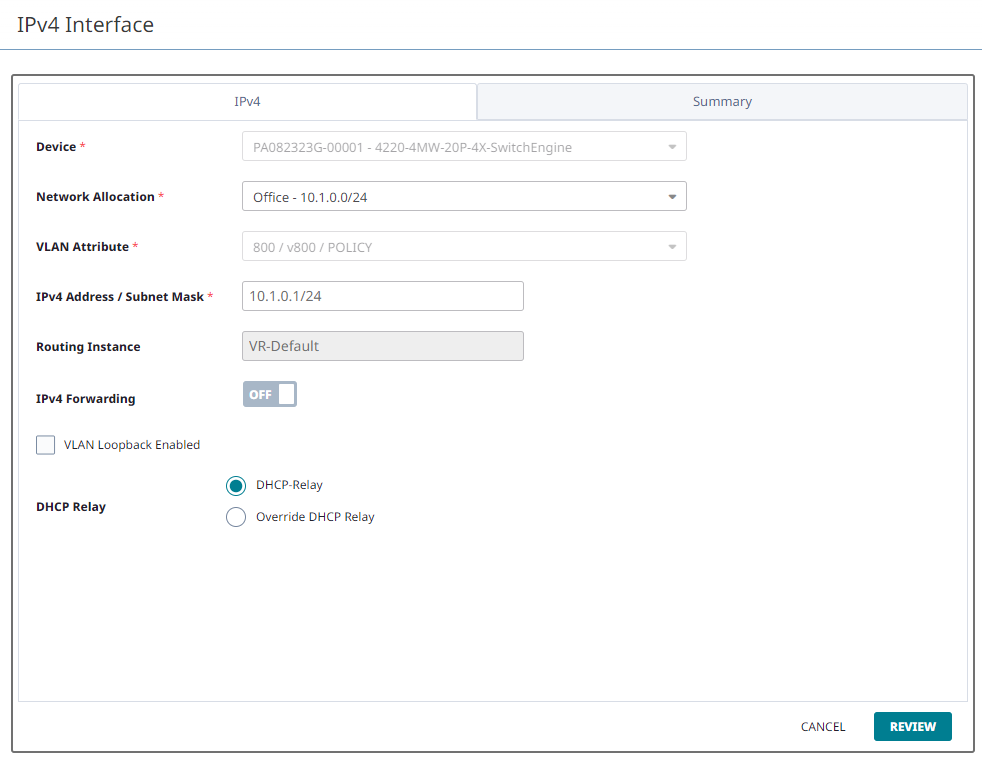
-
Configure the following routing
settings:
Table 1. Routing Attributes Field Description Device (Mandatory) Select a Device from the drop-down menu. Only standalone or stack EXOS/Switch Engine switches with this policy assigned can be selected. Network Allocation (Mandatory) Select a Network Allocation from the drop-down menu. Note: You cannot assign a device to the same subnetwork twice or multiple subnetworks referencing the same VLAN ID or subnetworks with overlapping subnet space.VLAN Attribute (Read-only) Select a VLAN Attribute from the drop-down menu. Note: This field displays <VLAN ID> / <VLAN name> / <VLAN attribute created from>. For IPv4 interfaces created from a network policy, it will display the VLAN ID and VLAN name from the selected subnetwork and "POLICY" as the source for the VLAN attribute.IPv4 Address / Subnet Mask (Mandatory) Shows the assigned IP Address, such as 10.1.0.0/16.Note: IPv4 address must be a host address within the same subnet space as the selected subnetwork.Routing Instance (Read-only) Shows the Routing Instance. Note: IPv4 interfaces can only be created within VR-Default.IPv4 Forwarding Enables/disables IPv4 forwarding. VLAN Loopback Enable or Disable VLAN Loopback. DHCP Relay (Read-only) DHCP Relay configured within the selected subnetwork or allows overriding DHCP Relay from subnetwork with a custom configuration. -
By selecting a device when
creating an IPv4 interface, the routing feature allows you to perform
device-level configuration from a network policy. The entries from Routing table
generates delta only for those devices selected when the IPv4 interfaces have
been created.

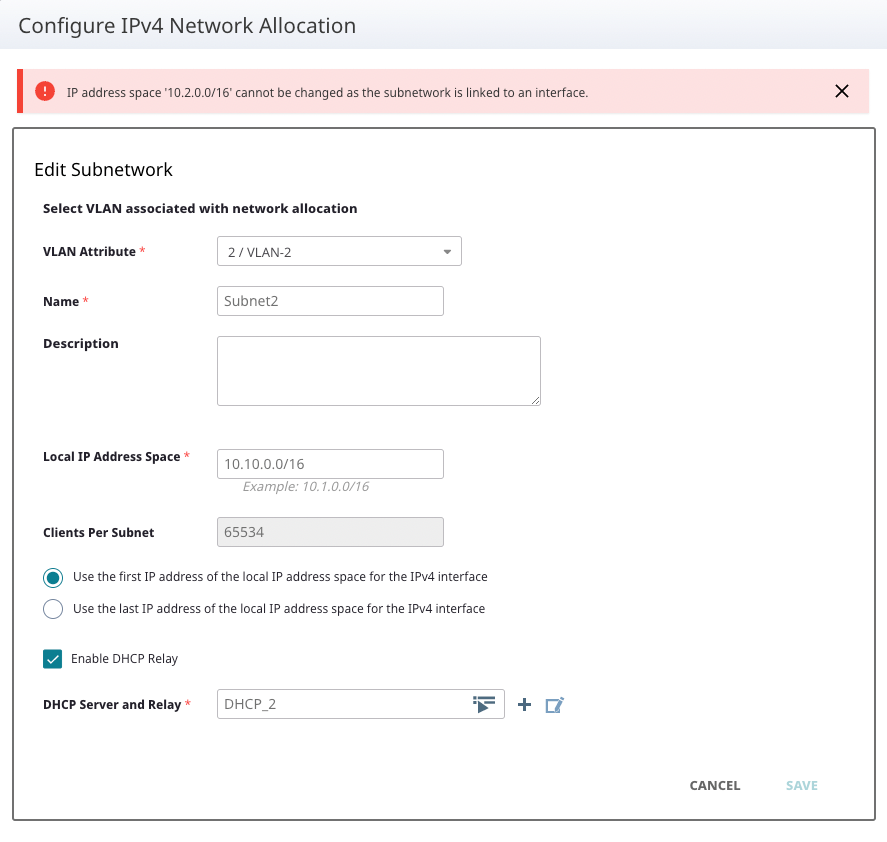

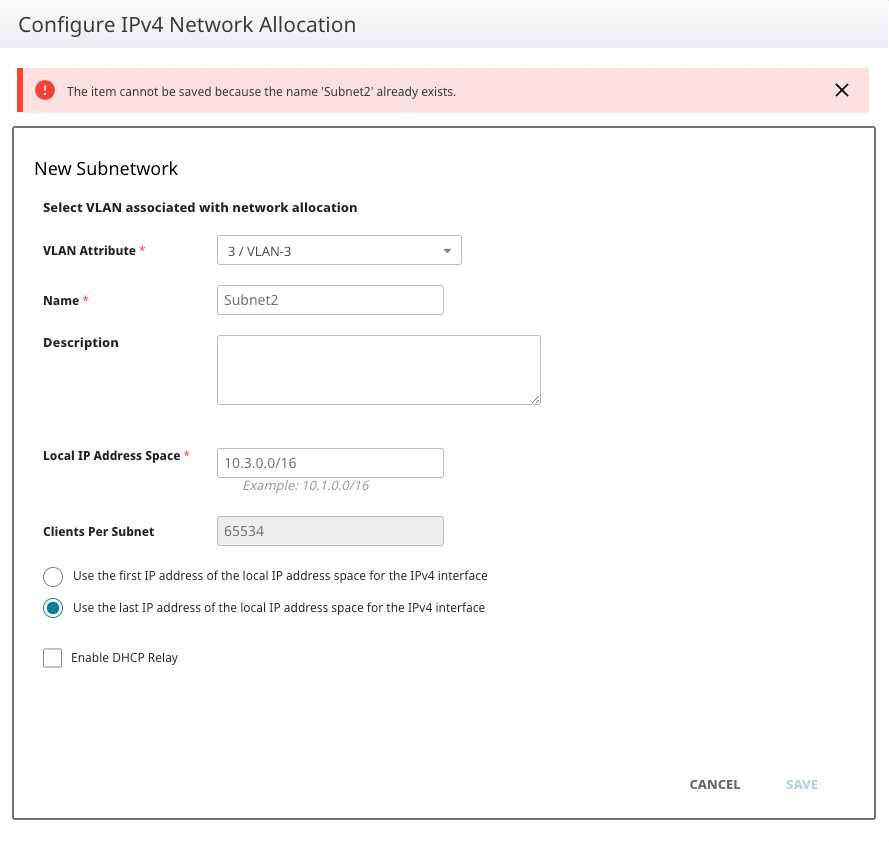
-
Device-level IPv4 interface
configuration can be performed also from device-level page of each device which
has a policy assigned: go to Manage > Devices and select the supported device. Select Configure > Network
Allocation > Interface
Configuration.

Note
When creating an IPv4 interface from this page, the Network Allocation field is grayed out, a VLAN attribute must be selected instead. While Port / VLAN Configuration is locked, only VLAN attributes created from the assigned network policy can be selected. VLAN IDs or IPv4 addresses from the same subnetwork can only be configured once to a device.
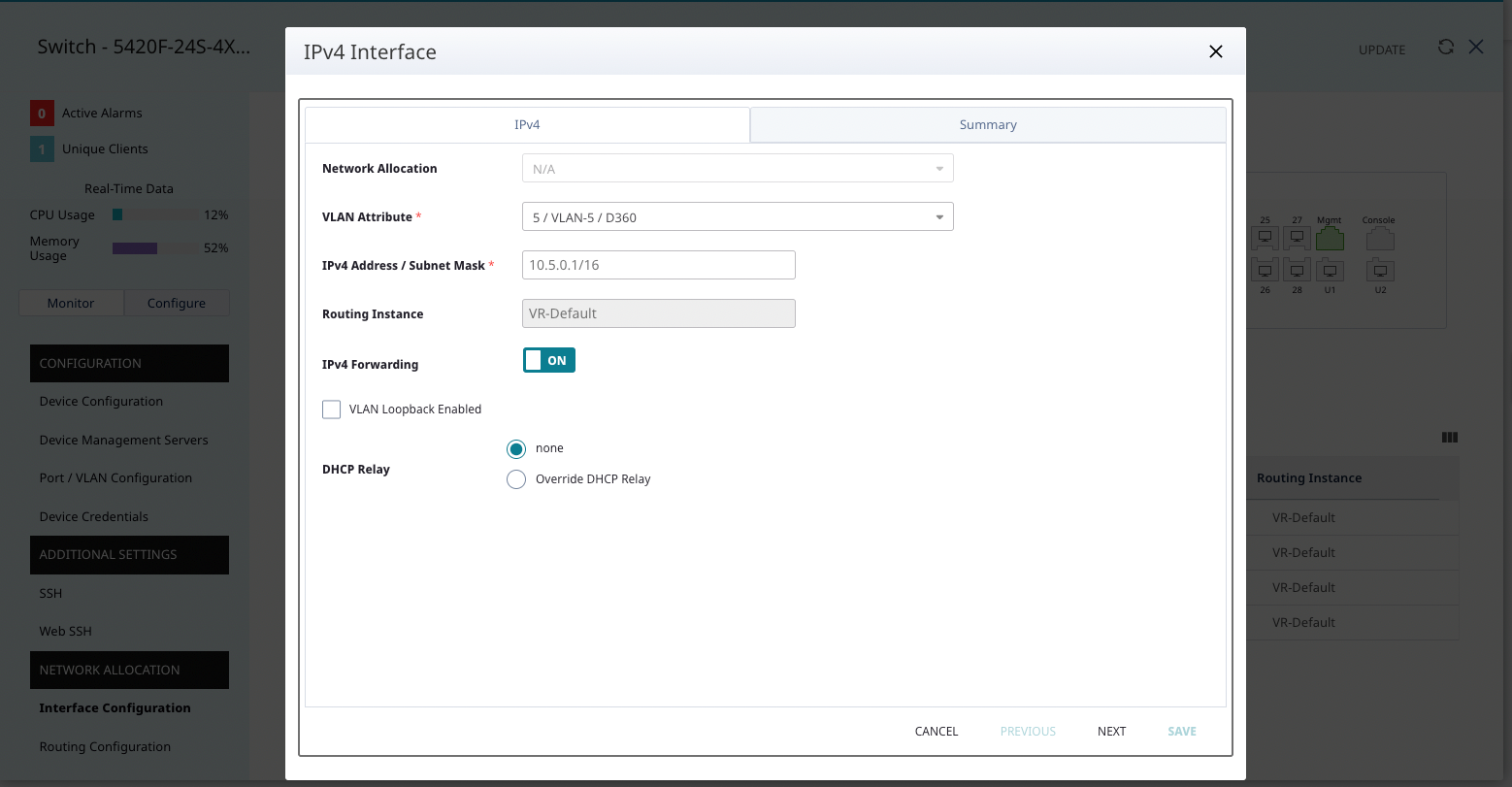
-
All IPv4 interfaces created from
a network policy for a specific device are displayed and can be edited also from
the device-level page of that device and vice-versa.

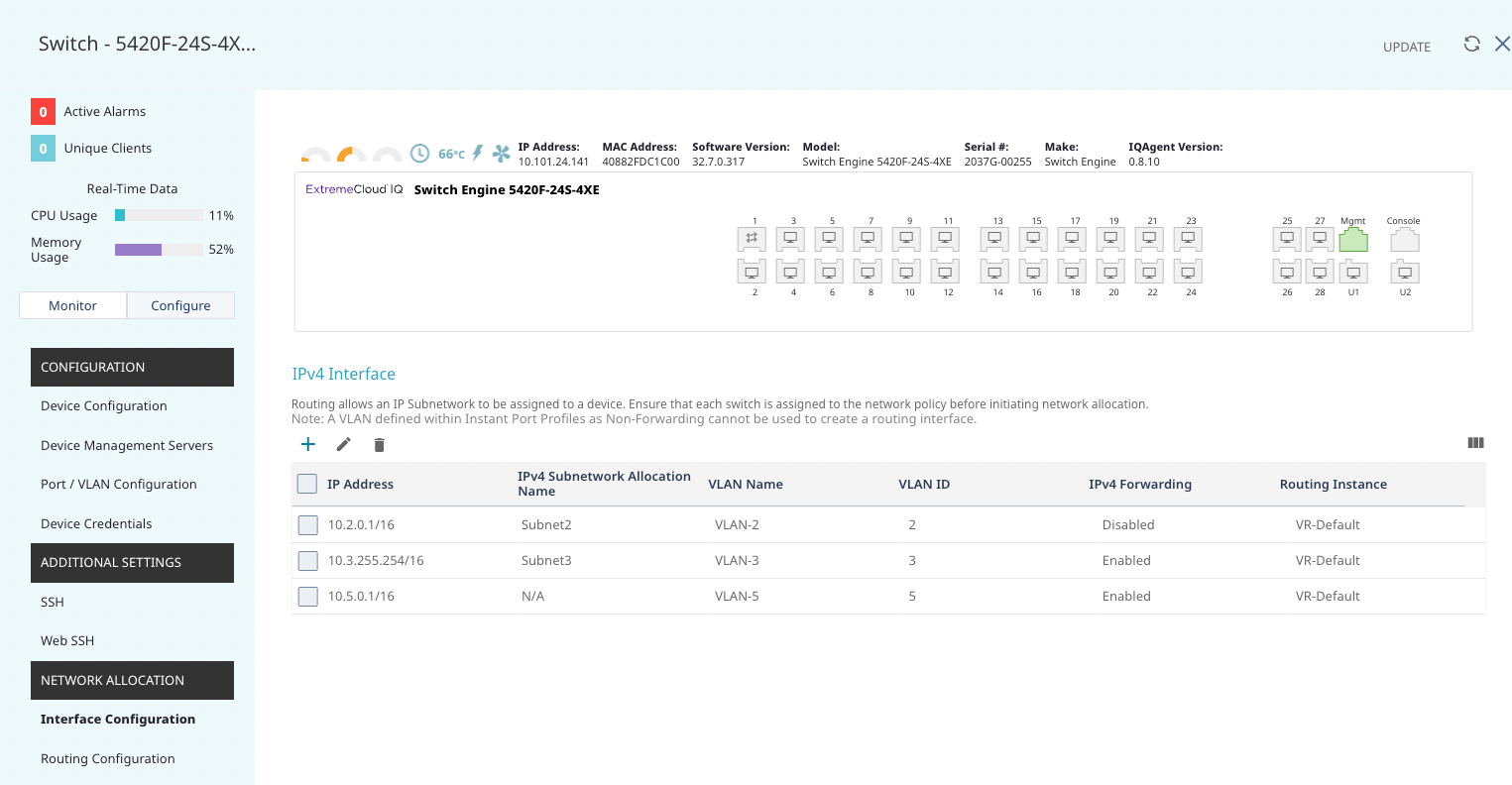

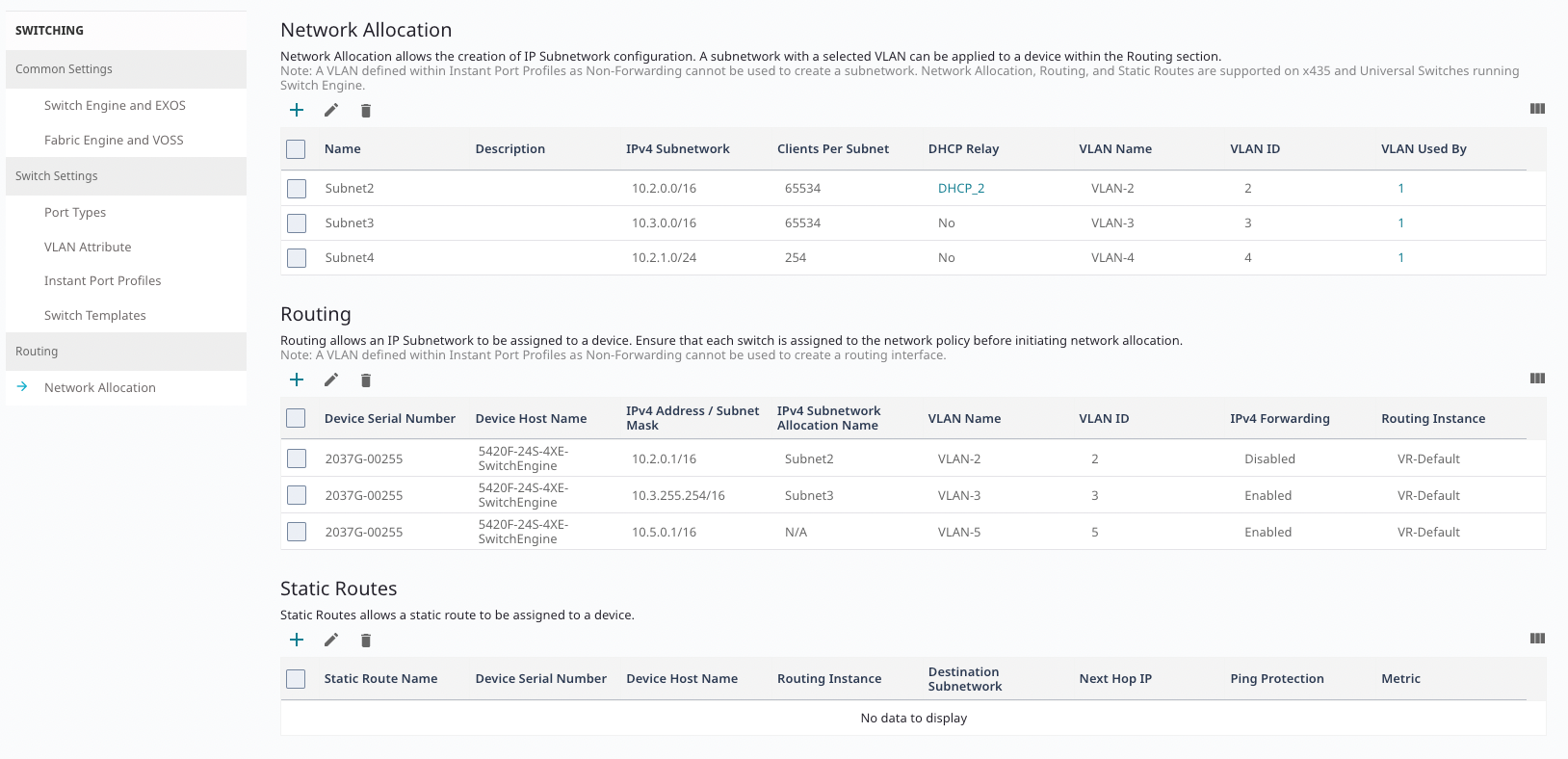

Note
After unlocking Port / VLAN Configuration, when creating IPv4 interfaces from device-level configuration page, only VLAN attributes created from this page can be selected. Even with VLAN attributes configuration unlocked, IPv4 interfaces can be created from a network policy as long as for the VLAN ID of the selected subnetwork, there is a corresponding VLAN attribute in device-level configuration page. -
Before reverting Port / VLAN
Configuration back to the switch template, ensure for all the VLAN IDs of the
IPv4 interfaces created while the configuration was unlocked, there are
corresponding VLAN attributes within the network policy or the operation won't
be allowed.
When reverting to the switch template configuration, the system will link the IPv4 interfaces to the VLAN attributes defined in the network policy based on the VLAN ID. This process effectively unlinks the interfaces from the VLAN attributes associated with the device-level configuration, allowing for the deletion of those device-level VLAN attributes.

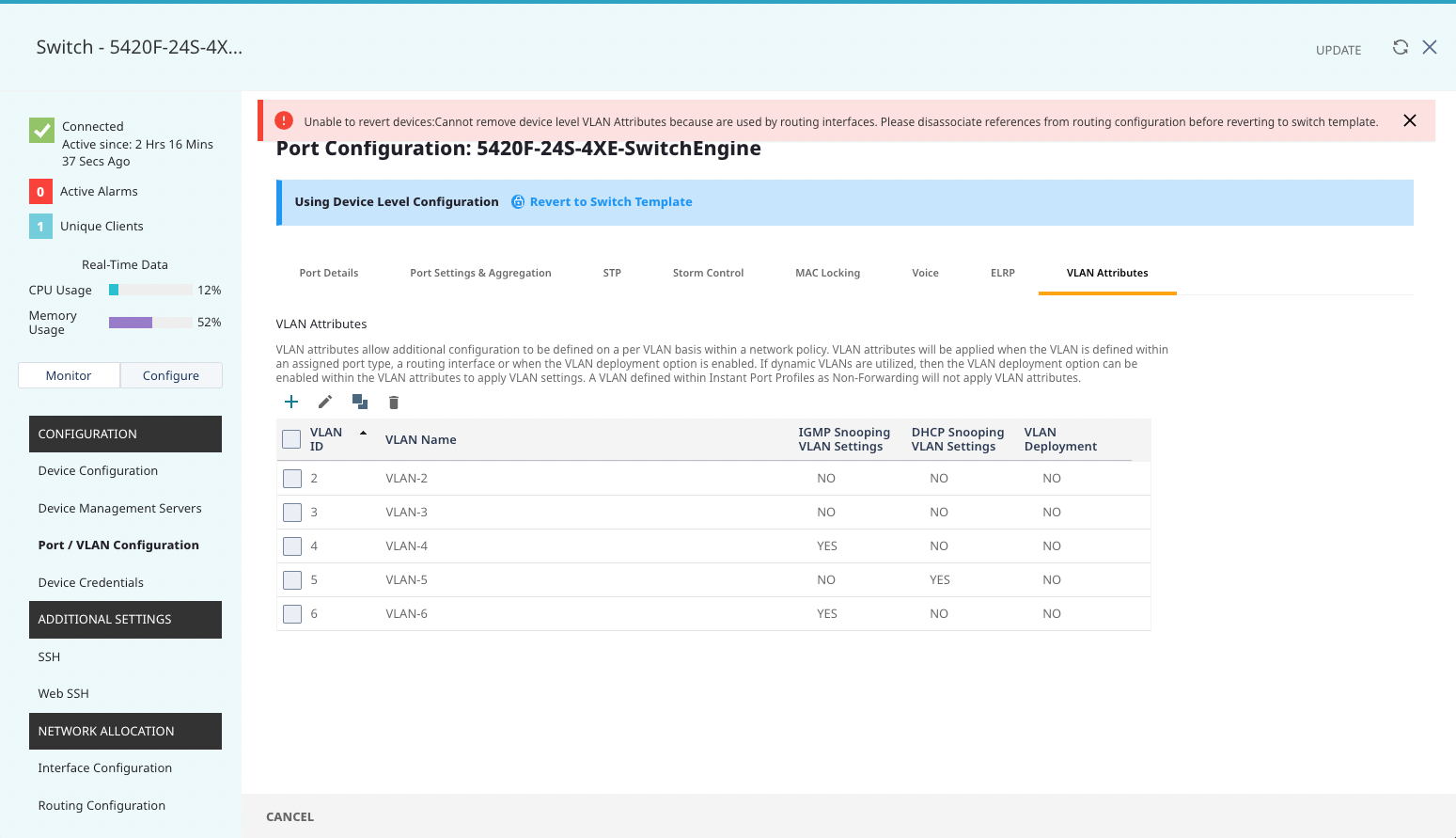

Note
A VLAN defined within Instant Port Profiles as Non-Forwarding cannot be used to create a routing interface, an error message will be displayed when checking delta or before pushing the configuration on the device.
Note
The VLAN defined within Management Interface Settings cannot be used to create a routing interface, an error message will be displayed when trying to create the IPv4 interface. If a VLAN used by an existing IPv4 interface is configured within Management Interface Settings, an error message will be displayed when checking delta or before pushing the configuration on the device.
Note
IPv4 interfaces with IPv4 address in the same subnet as IPv4 address configured from Management Interfaces Settings cannot be created, an error message will be displayed when trying to create the IPv4 interface. When configuring the IPv4 address within Management Interface Settings in the same subnet as an existing IPv4 interface, an error message will be displayed when checking delta or before pushing the configuration on the device.
Note
The management interface defined within Management Interface Settings is displayed as read-only in IPv4 routing interfaces tables from both device-level configuration page and network policy.
